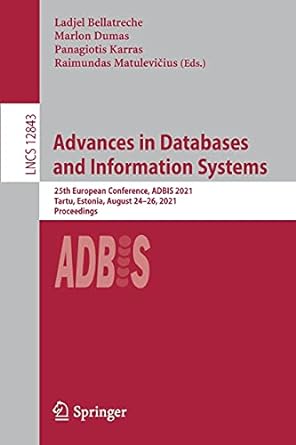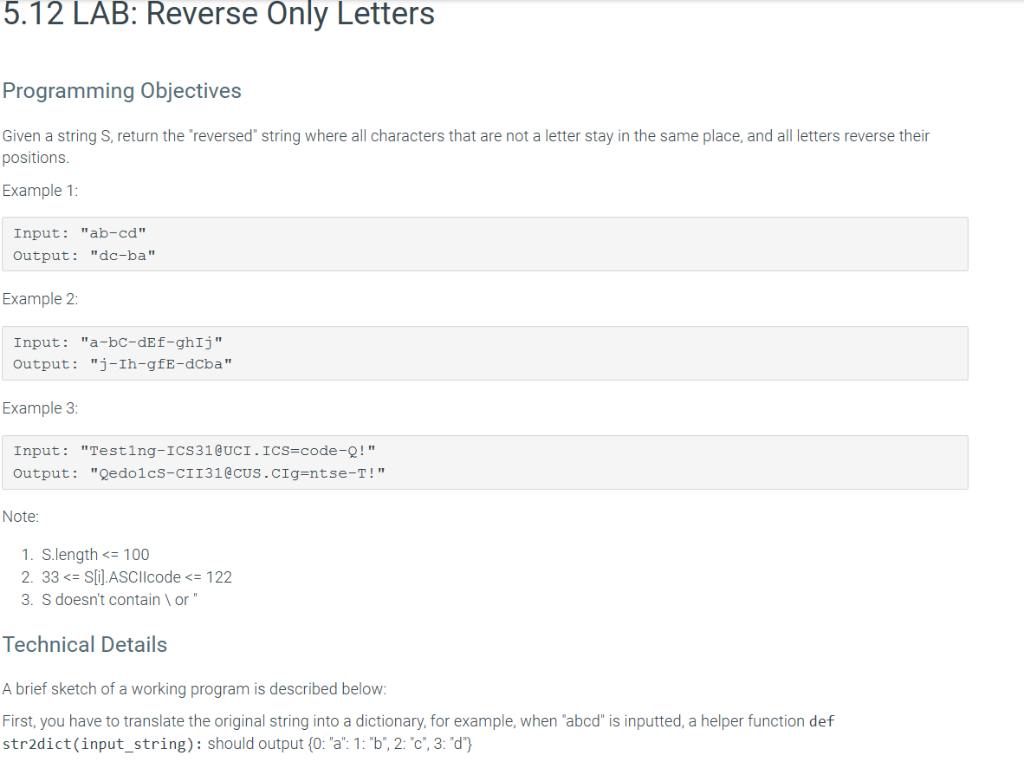
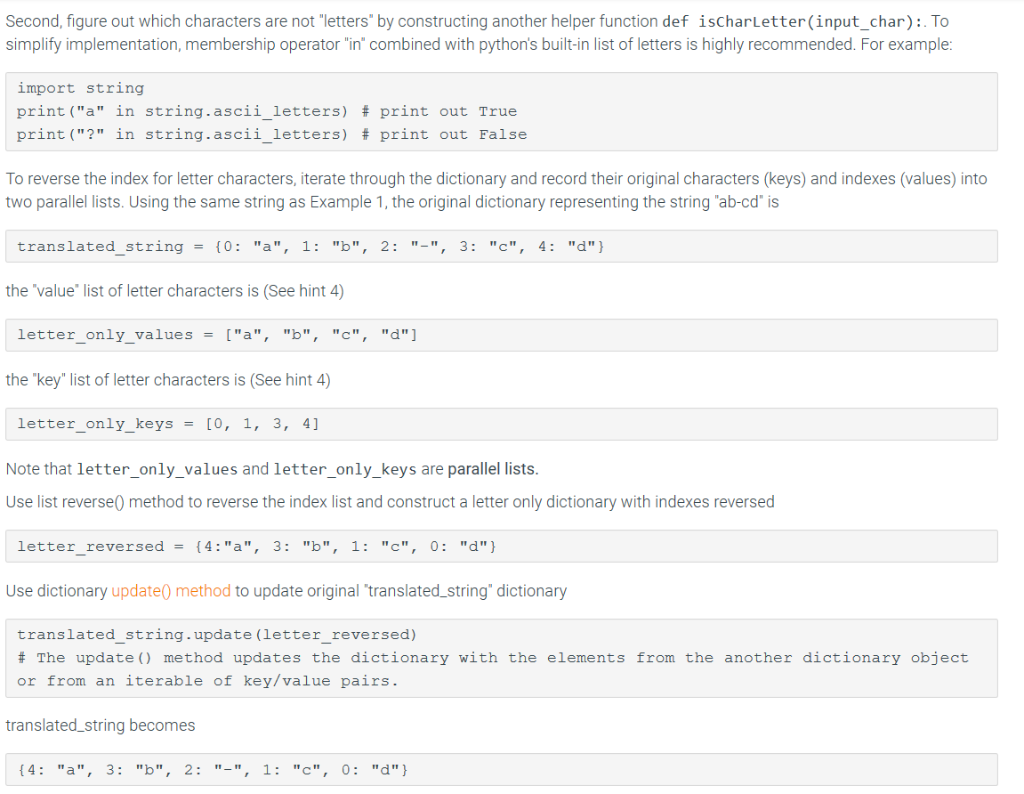
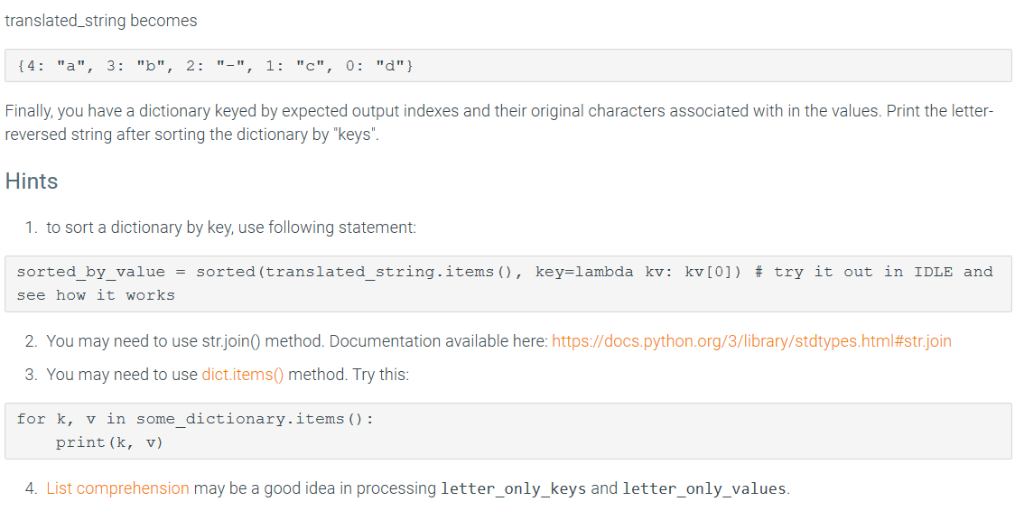
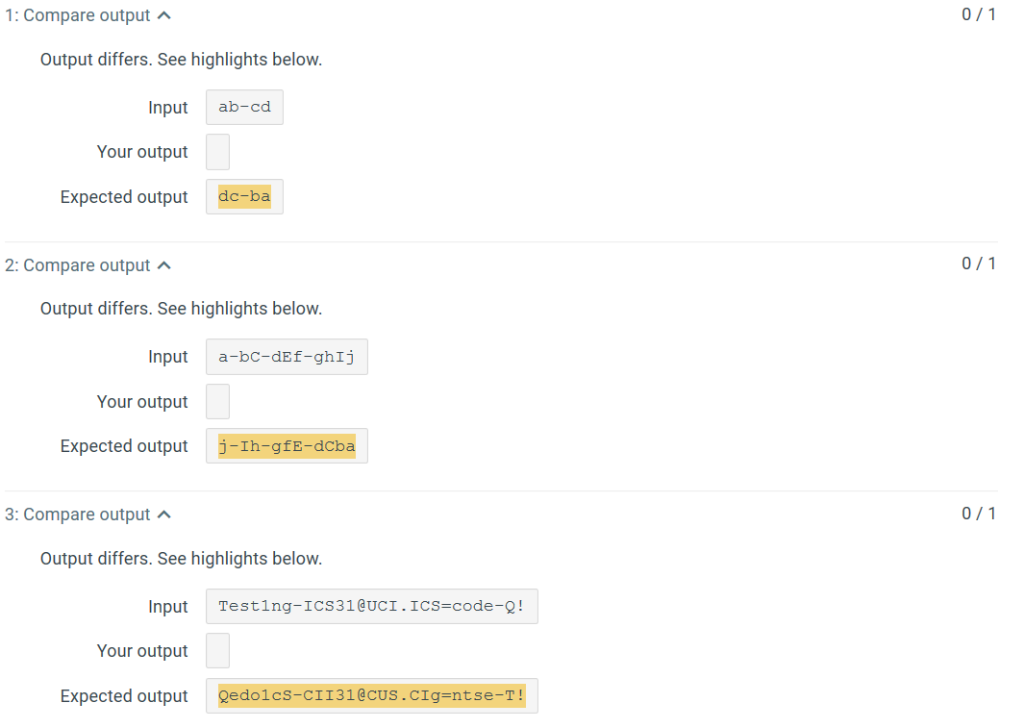
This is what I have done
import string def reverse_fun(char_list): i=0 name_key=[] print(translated_string) while i 5.12 LAB: Reverse Only Letters Programming Objectives Given a string S, return the reversed string where all characters that are not a letter stay in the same place, and all letters reverse their positions Example 1: Input: "ab-cd" Output: "dc-ba" Example 2: Input "a-bC-dEf-ghIj" Output: "j-Ih-gfE-dcba" Example 3 Input: "Testing-ICS31UCI.ICS code-Q!" Output: "Qedoles-CII31ecus.cIg-ntse-T!" Note: 1. S.length 100 2. 33c=S[i].ASCI!code 122 3. S doesn't contain\or Technical Details A brief sketch of a working program is described below First, you have to translate the original string into a dictionary, for example, when "abcd is inputted, a helper function def str2dict (input-string): should output {0: "a": 1:-, 2:, 3: 'd') Second, figure out helper function def ischarLetter(input_char):. To simplify implementation, membership operator in' combined with python's built-in list of letters is highly recommended. For example: which characters are not'letters by constructing another import string print ("a" in string.asciiletters) # print out True print("?" in string.asc11-letters) # print out False - To reverse the index for letter characters, iterate through the dictionary and record their original characters (keys) and indexes (values) into two parallel lists. Using the same string as Example 1, the original dictionary representing the string ab-cd' is translated string- (0: "a", 1: "b", 2: "-", 3: "c", 4: "d" } the "value list of letter characters is (See hint 4) letter only values ["a", "b", "c", "d"] - - the "key" list of letter characters is (See hint 4) letter_only_keys-[0, 1, 3, 4] Note that letter_only_values and letter_only_keys are parallel lists. Use list reverse0 method to reverse the index list and construct a letter only dictionary with indexes reversed letter reversed {4:"a", 3: "b", 1: "c", 0: "d") = - Use dictionary update0 method to update original "translated string" dictionary translated_string.update (letter_reversed) # The update() method updates the dictionary with the elements from the another dictionary object or from an iterable of key/value pairs. translated_string becomes translated_string becomes Finally, you have a dictionary keyed by expected output indexes and their original characters associated with in the values. Print the letter- reversed string after sorting the dictionary by "keys Hints 1. to sort a dictionary by key, use following statement ) # try it out in IDLE and sortedbyvalue = sorted (translatedstring. tems(), key-lambda kv: kv see how it works - - - 2. You may need to use str Joino method. Documentation available here: https://docs python.org 3. You may need to use dict.items0 method. Try this for k, v in some_dictionary.itemsO: library stat pes html#stron print (k, v) 4. List comprehension may be a good idea in processing letter_only_keys and letter_only_values 1: Compare output ^ Output differs. See highlights below. Input ab-cd Your output Expected output dc-ba 2: Compare output Output differs. See highlights below. pt a-bc-dEf-ghIj Your output Expected output j-Ih-gfE-dcba 3: Compare output ^ Output differs. See highlights below. Input Testing-ICs31 UCI. ICS code-Q! Your output Expected output Redoles-CI131ecus.cigentse-T










